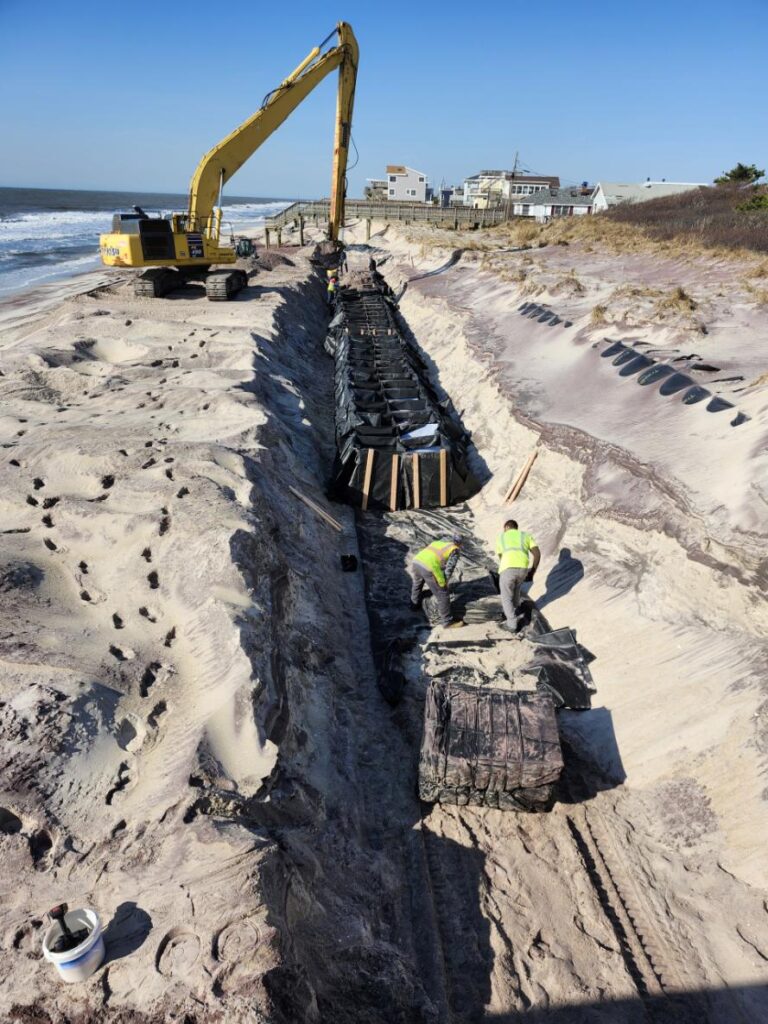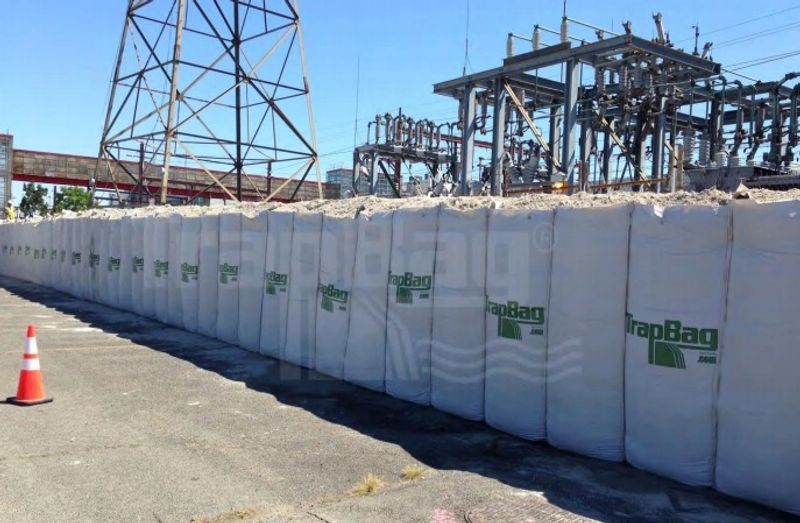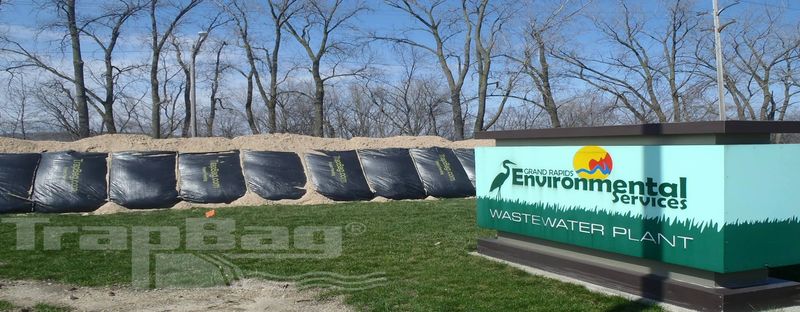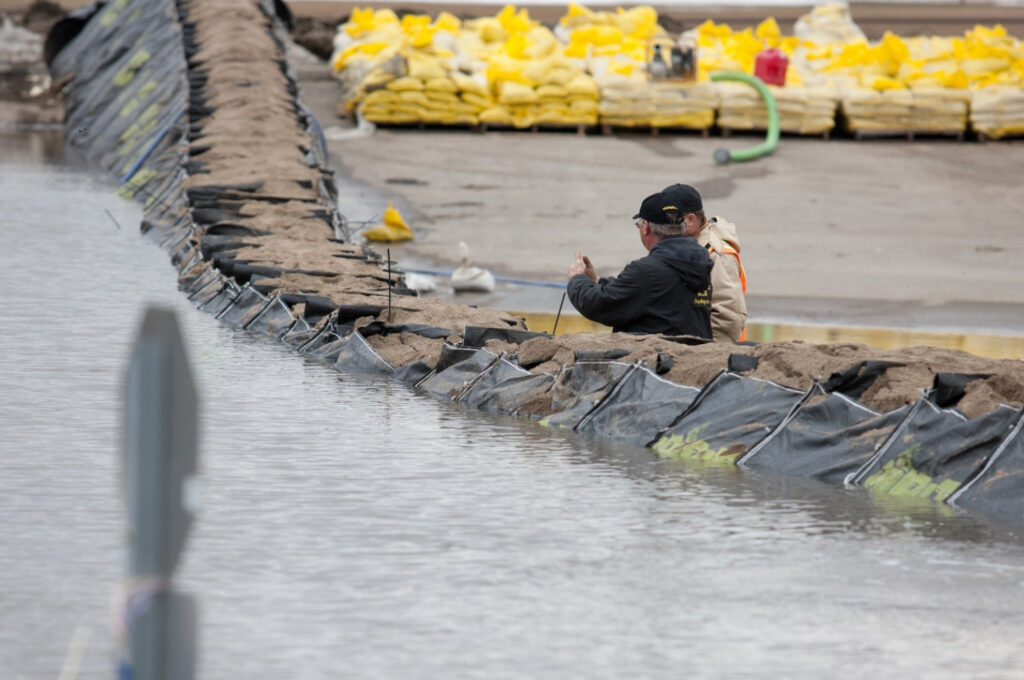How TrapBag Is Used in Emergency Response to Natural Disasters
TrapBags can prevent and minimize damage from natural disasters while costing less and being easier to assemble than other barriers. They’re trusted as a tool to protect what matters most in natural disasters, especially during the most critical moments in a storm.
Here are some of the ways emergency management teams use TrapBag in their work.
Flood Control
TrapBags were originally designed as emergency flood barriers that could withstand hurricanes with catastrophic storm surges. Emergency management crews still use them as emergency levees, dikes, or dams for this purpose today to protect neighborhoods, infrastructure, and commercial businesses in communities.
Learn More »Infrastructure Protection
Damage to vital infrastructure like highways and water treatment systems during disasters can cause even more damage. Therefore, it’s critical to protect infrastructure from damage during emergencies.
Emergency management crews often use TrapBag to protect vulnerable pieces of infrastructure like highways and bridges from natural disasters. Since TrapBags can withstand severe wave action, they make it easier to keep these structures safe during and after the danger has passed.
Learn More »Erosion Control
Controlling erosion is crucial in preventing damage from natural disasters, such as hurricanes and tropical storms. Emergency management firms can use TrapBag to minimize erosion, protecting beaches and cliffsides from washing away. This helps safeguard the areas behind these natural barriers, reducing the risk of damage during severe weather events.
Learn More »Mudslide & Mudflow Prevention
Mudslides and mudflows require their own emergency management plans because they can stem from other disasters. They can also happen quickly and have the potential to be extremely deadly without proper preparation.
With the right fill material, TrapBag can be used to divert mudslides and prevent them from causing catastrophic damage to hillside neighborhoods and infrastructure.
Learn More »TrapBag’s Preventative Solutions to Damage from Natural Disasters
TrapBag is a rapid-deploy solution for flood and erosion control that has been trusted as a leak-resistant barrier for years. The reasons why it’s been the go-to flood control solution for emergency management crews include:
-
Ease of assembly: It takes dozens of people hours or even days to build a traditional sandbag barrier or set up jersey barriers before a flood or hurricane. However, a team of two people and a third person operating an excavator or skid steer can assemble a TrapBag barrier in hours.
-
Less material: Compared to a similarly sized wall of stacked sandbags, a TrapBag barrier uses 40% less fill material while being even more durable. A single 100-foot section of 4-foot tall TrapBags replaces about 8,000 sandbags to create a barrier of the same size.
-
Better durability: Traditional water barriers or retaining walls have a higher margin of error during the building process, making them more prone to collapse under constant pressure. However, TrapBag barriers can hold back thousands of gallons of water or mud and stay standing strong through any project, including major hurricanes or storms.
Why Choose TrapBags for Emergency Management & Disaster Response Plans?

-

Versatility
No matter which type of emergency you’re dealing with, whether it’s a category 5 hurricane or a chemical spill, TrapBag can serve as a resilient, durable barrier that keeps water or contamination away from what matters most. Emergency management crews have used it as a flood barrier, seawall, erosion control barrier, and more for protecting lives and property.
-

Speed
Every second counts when rolling out a natural disaster response plan. That’s why TrapBag is a preferred emergency management solution—because the barriers can be assembled and filled in a fraction of the time required for a sandbag wall of the same size.
A crew of three people and an excavator or skid steer can assemble a TrapBag barrier for flood protection or mudslide diversion in under an hour. For comparison, building the same-sized barrier with sandbags or water-based flood bags often requires multiple days and dozens of people.
-

Reliability
Public works and emergency management services have relied on TrapBag for their severe weather preparedness plans for years. It provides a 3:1 (mass to hydraulic load) safety factor that allows it to withstand everything from urban flooding to some of the worst storm surges hurricanes can produce.
This need for disaster preparedness is why we’re proud to say the U.S. Army Corps of Engineers has successfully tested TrapBag for its flood protection capabilities during emergencies. It can meet the water diversion requirements for almost any emergency situation.



